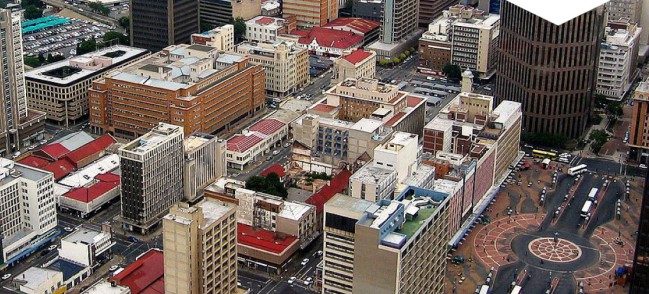With two-thirds of South Africa’s total population now living in urban areas, cities have increasingly been recognised as key spaces for economic and social development.
Rapid urbanisation over the post-apartheid period has meant a massive increase in the number of urban residents who need housing, jobs, transport, services, health care and schooling. While the state has made important progress in some areas, urban growth continues to put a critical strain on the provision of services and infrastructure, exacerbating the already high levels of poverty and inequality that exist in cities.
One of the most visible changes in South African cities over the last 20 years has been the pattern of residential integration and segregation. Research by Professor Owen Crankshaw in the Department of Sociology shows how changing patterns of inequality in the labour market have resulted in the emergence of new spatial divisions in South Africa’s cities. In May 2014, Professor Crankshaw published an article in the Sunday Times explaining that the movement of well-educated blacks into managerial, professional and technical jobs has led to a significant growth in the black middle class. This, in turn, has resulted in an influx of black middle-class residents into formerly whites-only suburbs. The spatial implication is that these areas have become increasingly desegregated. There are now more black South Africans in the middle classes than white and, in the formerly whites-only suburbs of Johannesburg, two-thirds of the residents are now black.
On the other end of the scale, however, many less-educated blacks have become poorer because of rising unemployment. This has meant that townships are increasingly concentrated with poor, unemployed workers and there has been a steady growth in backyard rooms and informal settlements in these areas.
“The new pattern of residential segregation in our cities is not the same as apartheid segregation. This new pattern of segregation is a division between the racially mixed middle-class suburbs on the one hand, and the black working-class townships with high levels of unemployment on the other,” writes Professor Crankshaw.
Looking at spatial inequalities in South African cities through a slightly different lens is Professor Robert Cameron from the Department of Political Studies, together with Dr Helder do Vale from the Centre for Political and Constitutional Studies in Spain. Their research focus is on the perpetuation of spatial inequality through uneven financial and institutional endowments in local government. Post-apartheid South Africa experienced a sweeping process of decentralisation that attempted to foster an equal distribution of basic services between local governments. However, as Professor Cameron and Dr Do Vale propose, this process created new inequalities in the delivery of local services between South African municipalities. Their findings suggest that these local asymmetries result from the uneven financial and institutional endowments in local government. The metropolitan municipalities have been able to improve welfare outcomes because of their stable sources of revenues. Cities like Johannesburg and Cape Town also “have greater autonomy than other local governments in the country in managing their resources and are better able to respond to the demands of the local population”. Professor Cameron and Dr Do Vale are using their research to develop a closer understanding of the trajectories of local welfare regimes in South Africa.
Cities are not only locations where people live and work and benefit from services, they are also important sites of activism and social-movement mobilisation. With a history of forced removals and apartheid-era evictions, and in a context of pervasive poverty and inequality, struggles for socio-economic rights have been pertinent in post-apartheid cities. Students and researchers from the Department of Environmental and Geographical Science have collaborated with the Valhalla Park Civic and its activists to look at ways in which activism and work for justice and transformation shape neighbourhood and city politics.
Struggles to access houses, the occupation of land and contestation of the city’s razing of shack settlements in court are important civic successes. Yet the Valhalla Park Civic and its residents feel a stigma as leaders and residents in a “dysfunctional township”: an impoverished, violent, gangster-ridden neighbourhood. Drawing on political mobilisation, and building “community”, together the researchers and activists have documented the challenges and opportunities in neighbourhood initiatives to address poverty, as well as reflecting on the building of collaborative relationships and trust, and how knowledge may be collaboratively constructed. To date, a range of documents from popular booklets to academic publications have been produced from this collaborative nine-year research project.



Comments are closed.